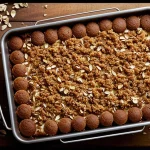Essential Ingredients and Equipment for Authentic Cornish Pasties
Crafting a traditional Cornish pasty begins with the authentic Cornish pasty ingredients. These include finely diced beef, typically skirt or chuck, paired with cubed potato, swede (rutabaga), and onion, all encased in a sturdy yet flaky pastry. Using top-quality ingredients not only preserves the classic flavor but also ensures the pasty holds together during baking, a hallmark of authentic Cornish pasty supplies.
Equipping yourself with the right Cornish pasty equipment streamlines the process. A reliable rolling pin is essential for evenly flattening the pastry dough. The use of pastry cutters can help achieve precise shapes and sizes, guaranteeing each pasty maintains uniformity. Equally important are quality baking trays, preferably non-stick or well-seasoned, to support even cooking and easy removal.
Also to discover : What are some creative recipes for using leftover British puddings?
When sourcing authentic Cornish pasty ingredients, prioritize fresh, locally sourced beef and vegetables, as freshness directly impacts the final product’s taste and texture. Combining these high standards in ingredients and equipment is key to recreating the true essence of a traditional Cornish pasty.
Preparing the Perfect Cornish Pasty Dough
Mastering the foundation of a great pasty
In the same genre : What are the Unsung British Foods that Deserve More Recognition?
The key to Cornish pasty dough that bakes into a flaky, sturdy crust starts with the right pastry recipe. To achieve the ideal texture, mix cold butter into the flour until it resembles coarse breadcrumbs. Add just enough cold water to bind the dough without making it sticky. Kneading should be minimal; overworking the dough can toughen your pasty pastry, so aim for a smooth, cohesive ball.
Resting the dough is critical—it allows the gluten to relax, making the dough easier to roll and preventing shrinkage during baking. Wrap the dough tightly in cling film and refrigerate for at least 30 minutes. This step is essential to maintain the pastry’s delicate balance between sturdiness and flakiness.
When rolling, aim for an even thickness around 3mm. Use a light dusting of flour to prevent sticking and roll from the center outward to maintain uniformity. This ensures your Cornish pasty dough is both workable and reliable, providing the perfect casing for your filling without tearing or collapsing.
Perfect pastry starts with technique—master these steps to make your pasty pastry exceptional every time.
Step-by-Step Assembly of Cornish Pasties
Mastering the art of assembling Cornish pasties efficiently
Begin by cutting even pastry rounds, typically around 6 to 8 inches in diameter. This size balances the pasty filling and pastry ratio, ensuring the crust remains crisp without overwhelming the contents. Using a lightly floured surface prevents sticking while maintaining a tender pastry texture.
When layering the pasty filling, portion plays a crucial role. Classic fillings include diced beef, onions, swede, and potatoes in roughly equal amounts. Place these gently in the center of the pastry round, keeping the mixture compact but not overloaded. Proper placement avoids spillage during baking and helps maintain the iconic shape.
The next step is pasty shaping—fold the pastry over the filling to create a half-moon, then crimp the edges firmly for a lasting seal. This seal locks in moisture, ensuring a juicy interior while allowing the crust to bake golden and flaky. Avoid pressing too thin, which could cause leaks, or too thick, which hinders even cooking.
Perfecting these steps guarantees a Cornish pasty with tender filling and satisfying, crisp pastry every time.
Mastering the Iconic Crimping Technique
Unlock the secret behind the perfect Cornish pasty crimp
The Cornish pasty crimp is more than a simple seal—it’s a signature hallmark rooted in tradition. Understanding the crucial differences between the side crimp and the top crimp is essential. The side crimp folds the pastry dough over itself along one side, creating a series of tight, pinched pleats that secure the filling while giving that classic crescent shape. Conversely, the top crimp is simpler but less traditional, sealing the pasty by pinching the edges on top, which may not hold as firmly during baking.
Finger techniques play a vital role in achieving a reliable and decorative seal. Using your thumb and forefinger, pinch the dough to form even pleats, ensuring the filling stays inside without leaks. Some prefer the “thumb roll,” pressing and rolling the edge between thumb and forefinger to create a sturdy crimp that also adds charm.
Common mistakes include overfilling, causing the crimp to burst, or under-crimping, which leads to a flat, unappealing finish. Practicing the pasty folding motion helps develop muscle memory—making your traditional pasty crimping both secure and visually appealing.
Baking Cornish Pasties to Perfection
Mastering the art of a flawless pasty
When baking Cornish pasties, getting the oven temperature right is crucial. The ideal Cornish pasty oven temperature is typically around 200°C (392°F). At this heat, the pastry will develop a golden, crisp crust without burning. Baking them for about 45-50 minutes ensures the filling cooks thoroughly while the pastry browns evenly.
Visual cues are indispensable for recognising doneness. Look for a rich golden-brown color on the pastry surface—this signals the crust is crisp and flaky. If the crust appears pale or doughy, it needs more time. Make sure to rotate the baking tray mid-way for even cooking, especially if your oven has hot spots.
For pasty baking tips, avoid opening the oven door frequently as it causes temperature drops, affecting crust quality. Additionally, chilling the pasties before baking helps maintain their shape and promotes a more even bake. By balancing oven temperature, timing, and keen observation, you’ll achieve pasties that are perfectly cooked inside with a delightfully crisp exterior.
Cornish Pasty Tradition and Troubleshooting Common Issues
The Cornish pasty history is rich, originating from Cornwall, England, as a practical meal for tin miners. Its traditional form consists of a sturdy pastry filled with beef, potatoes, swede, and onions. This iconic dish reflects both working-class heritage and regional pride.
When baking a Cornish pasty, beginners often face common mistakes that affect texture and flavour. One frequent problem is overworking the pastry dough, which can cause it to become tough rather than flaky. To fix this, handle the dough gently and chill it before rolling. Another issue is unevenly distributed filling, leading to soggy or undercooked sections. Ensure fillings are cut uniformly and avoid overfilling, helping the pasty cook evenly.
Authenticity in flavour and texture is crucial to honouring the tradition and authenticity cherished by Cornish pasty enthusiasts. Using traditional ingredients, like skirt beef and incorporating a crimped edge, preserves the pasty’s unique character. Baking at the correct temperature until the pastry is golden ensures the right balance between flaky exterior and savoury filling.
Master these details to enjoy Cornish pasty baking that respects history while sidestepping common pasty baking mistakes.
Features to Consider When Choosing a Robot Vacuum Cleaner
When selecting a robot vacuum cleaner, focusing on key features helps ensure you get the best value for your needs. Essential aspects include battery life, suction power, and smart navigation.
Battery life determines how long the robot can clean without interruption. For larger homes, choose models offering extended battery performance to cover all areas in one cycle. Suction power is equally crucial; higher suction intuitively means better dirt and debris pick-up, which is especially important if you have pets or carpets.
Smart navigation distinguishes top-tier robot vacuums. Models with advanced sensors or mapping capabilities adapt to your home layout efficiently, avoiding obstacles and ensuring thorough coverage. Some robot vacuums also feature app control, voice commands, or scheduled cleaning, adding convenience and flexibility.
Additionally, consider maintenance ease: dustbin capacity and filter quality impact how often you need to clean your robot vacuum. Incorporating these features will empower your decision-making and help you select a robot vacuum cleaner tailored to your lifestyle and floors.





